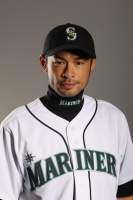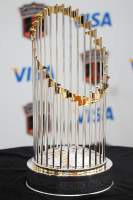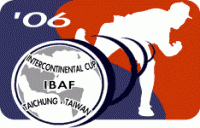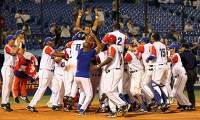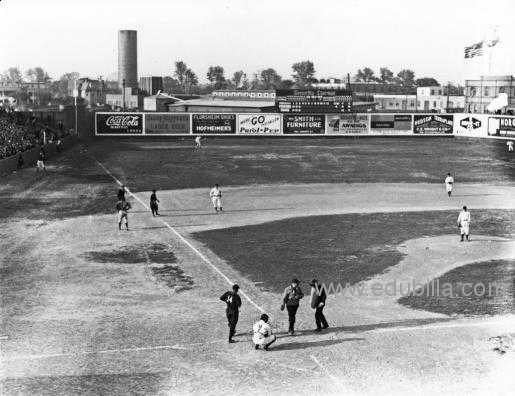
Overview Of Base Ball
Baseball is a bat-and-ball game played between two teams of nine players each who take turns batting and fielding.
The offense attempts to score runs by hitting a ball thrown by the pitcher with a bat and moving counter-clockwise around a series of four bases: first, second, third, and home plate. A run is scored when a player advances around the bases and returns to home plate.
Players on the batting team take turns hitting against the pitcher of the fielding team, which tries to prevent runs by getting hitters out in any of several ways. A player on the batting team who reaches a base safely can later attempt to advance to subsequent bases during teammates' turns batting, such as on a hit or by other means. The teams switch between batting and fielding whenever the fielding team records three outs. One turn batting for both teams, beginning with the visiting team, constitutes an inning. A game comprises nine innings, and the team with the greater number of runs at the end of the game wins.
Evolving from older bat-and-ball games, an early form of baseball was being played in England by the mid-18th century. This game was brought by immigrants to North America, where the modern version developed. By the late 19th century, baseball was widely recognized as the national sport of the United States. Baseball is now popular in North America and parts of Central and South America and the Caribbean, East Asia, and Europe.
In the United States and Canada, professional Major League Baseball (MLB) teams are divided into the National League (NL) and American League (AL), each with three divisions: East, West, and Central. The major league champion is determined by playoffs that culminate in the World Series. The top level of play is similarly split in Japan between the Central League and Pacific Leagues and in Cuba between the West League and East League.
Game Rules
SITUATION 1: With the bases empty, the batter’s backswing causes his bat to contact the catcher, thereby dislodging the baseball from the catcher. RULING: Since there was no play that could be made, there is no interference. Play will continue. (7-3-5c)
SITUATION 2: With the runner from third attempting to steal home, the batter swings and misses and his backswing contacts the catcher, causing him to drop the ball. The action occurs with a) one out or b) two outs. RULING: This is backswing interference. In a), the runner from third is out; in b), the batter is out. (7-3-5c Penalty)
SITUATION 3: R1 on first base gets a great jump on the pitcher's move and is sliding into second base when B2 swings and misses the pitch for strike three. B2's follow-through strikes the catcher. RULING: B2 is declared out for his interference and R1 is returned to first base. (7-3-5c Penalty)
SITUATION 4: R1 on first base attempts to steal second base and is about halfway to second when B2 swings and misses the pitch for strike three. B2's follow-through strikes the catcher causing him to drop the baseball. RULING: B2 is guilty of interference. Since the pitch was a third strike and B2's interference prevented a possible double play, both B2 and R1 are declared out. (7-3-5c Penalty)
SITUATION 5: The pitcher places his pivot foot on the pitching plate with the toe of the pivot foot in front of a line through the front edge of the plate and the heel of his pivot foot behind the back edge. His non-pivot foot is in front of the line extending through the front edge of the pitching plate. The pitcher attempted to pick-off the runner at second base. RULING: This is an illegal pitching position. When the pitcher moved in his pick-off attempt, he made an illegal pitch and a balk would be enforced. (6-1-2 Penalty)
SITUATION 6: The pitcher places his entire pivot foot on top of and parallel to the pitching plate. No part of his pivot foot is on or in front of the front edge of the pitching plate. His entire non-pivot foot is in a line with the pivot foot, on top of the pitching plate with no part of the non-pivot on or in front of the line of the front edge of the pitching plate. RULING: While this appears to be an unusual and a non-functional pitching stance, it is a legal wind-up position. (6-1-2)
SITUATION 7: The pitcher places his non-pivot foot on top of the pitching plate at a 45-degree angle with one-third of his pivot foot in front of the front edge of the pitching plate and the heel of his pivot foot behind the back edge of the pitching plate. His non-pivot foot is entirely in front of the front edge of the pitching plate. Without making any other movement, the pitcher places his pivot foot entirely behind the pitching plate.RULING: The pitcher initially assumed an illegal pitching position. Since he made no other movement, he is allowed to step back off of the pitching plate with his pivot foot and correct his illegal position. (6-1-2, 3)
SITUATION 8: The head coach appears at the game dressed in sweatpants and a sweatshirt. This combination is not an approved team uniform for a coach by the state association. RULING: The coach is restricted to the dugout for the balance of the game. He may coach his team from the dugout and provide instruction to his players. (3-2-1)
SITUATION 9: The home plate umpire, while positioned to make a call on a runner attempting to score, is hit by the ball in the mouth. His uniform shirt and pants become soaked with blood. RULING: The NFHS Sports Medicine Advisory Committee re-affirmed that if blood is on an umpire’s uniform, he will need to have it cleaned with the proper solution by a trainer, or change his uniform/ gear. If he is unable to do so and he does not have spare clothing, and his partner does not have any gear or uniform pieces that will fit, it is permissible to wear what is needed to be able to finish the game. (3-1-6)
SITUATION 10: With runners on third and first, the pitcher legally steps and feints to third and then legally turns and picks off the runner at first base. RULING: Provided all the aspects of the pick-off moves are legal, the out will stand. The “31” move is legal in high school baseball. (6-2-4)
SITUATION 11: As the head coach moves to the pitching mound for a defensive conference, he tosses a baseball to his third baseman and has him take warm-up throws with another player to get ready to pitch. RULING: A team cannot have a fielder, in the game, throw a baseball for the purpose of warming up as a pitcher, during a defensive conference or a pitching change. If a team desires to warm up a player in the game to prepare him to pitch, it would need to take him out of the game to warm up and then later re-enter him under the substitution rule. (3-4-1)
SITUATION 12: The visiting team has developed an orchestrated team action to cheer on a teammate to get a rally going. The action consists of a rhythmic series of hand claps and foot stomps. RULING: As long as the action is within the spirit of fair play, and not intended to induce a balk, create a distraction for the opposing team or intimidate/demean them, this action is acceptable. There have been some instances where a team, for example, begins to pound bats in the dugout only when the opposing pitcher begins to deliver a pitch. That action is clearly intended to gain an advantage and is not to be allowed. (3-3-1)
SITUATION 13: The home team has scheduled a game against Team A followed by a game against Team B. During the first game, a soft mist fell and the plate umpire believes he has the responsibility to determine if the field conditions are suitable for the second game. RULING:While the home team has scheduled two games on the same day, this should not be considered a doubleheader (two games between the same teams during the same day). The home coach has the responsibility to determine whether the grounds and other conditions are suitable for starting the game against Team B. (4-1-1)
SITUATION 14: In the fifth inning, the starting pitcher is removed for the first time in the game and goes to the bench. In the seventh inning, the original starting pitcher is re-entered to face the last batter. The opposing coach argues that the player cannot return to pitch, saying “once removed, he cannot come back to pitch.” RULING: If a starting pitcher was removed to the bench, he may return to pitch in a game provided a) he has re-entry eligibility; b) he faced the first batter of the game, or faced the first batter as a relief pitcher until that batter was on base or out or the third out of the inning occurred; c) his departure was not due to a violation of the defensive charged conference rule (fourth defensive conference in a seven-inning game); and d) his relief did not take more than eight warm-up throws. If those conditions are met, a pitcher may return to the mound. If a pitcher is removed and goes to another defensive position, he may be removed and return to pitch once an inning, provided the above requirements are met. (3-1-2, 3; 3-4-1 Penalty)
SITUATION 15: One of the players for the visiting team has beads in his hair. The home coach complains to the plate umpire that this is jewelry and the player may not participate in the game. RULING: Hair styles are as varied as players. One is not preferred over another with regard to baseball rules. A player with cornrows is as compliant as one with a flattop. Beads that are in the cornrows are considered to be a “hair adornment,” not jewelry. High school baseball rules have not concerned themselves with players’ hair styles or adornment. The beads are legal and the player may participate. (1-5-12)
SITUATION 16: Following a home run, the catcher picks up the bat, shakes it and hands it to the home plate umpire stating that the bat rattles. The home plate umpire verifies that the bat does rattle. The defensive coach wants the bat declared to be illegal and the appropriate penalties imposed. RULING: Per Rule 1-3-2a-3, “Each legal wood, aluminum or composite bat shall be free of rattles, dents, burrs, cracks and sharp edges.” A bat that has a rattle is an illegal bat. A player who uses one is subject to Rule 7-4-1 and his head coach will be subject to Rule 4-1-3b. The batter would be out and the head coach restricted/ejected. If the plate umpire did not notice the bat having a rattle prior to the at-bat, it should be assumed that the bat became illegal during the contact with the pitch and should not impose the penalties. The home run will count and the bat will be removed from further use in the game. (1-3-2-2a-3; 4-1-3b; 7-4-1)
SITUATION 17: The starting pitcher comes to the mound to take his warm-up throws to start the game. He is wearing a compression sleeve only on his throwing arm. The opposing coach demands that the sleeve be taken off before the pitcher may pitch. RULING: A pitcher may wear a compression or medical sleeve on one or both arms that is any color, including one that is white or gray, provided it does not extend below the elbow. A doctor’s signed permission slip is not required. If the pitcher wears a sleeve that extends below the elbow, it can be worn on either arm, provided it is not white or gray or have white/gray on it. It also cannot be of a color or color combination that would be deemed distracting by the plate umpire. (1-4-2; 6-2-1i)
SITUATION 18: B1 hits a home with an illegal bat. The bat was left not far from the plate area. B2 has taken his position in the batter's box and has received the first pitch for a ball. The plate umpire, noticing the bat used in the home run, walks over to get it back to the respective team's dugout. When he picks it up, he notices it is one of the bats that has been decertified by the NFHS. RULING: Since a pitch has been thrown to the next batter, B1's home run stands. B1's head coach, however, is still restricted to the dugout for his use of the illegal bat. (7-4-1a; 4-1-3b Penalty)
SITUATION 19: F7 makes a diving catch. As he slides over the line designating dead-ball territory, his feet remain in live-ball territory. Is the ball dead RULING: The ball remains live and in play. F7 must be entirely in dead-ball territory before the ball shall be declared dead. As long as any part of F7's body is touching the designated dead-ball line, the ball remains live. (5-1-1i)
SITUATION 20: In the second inning, the field umpire ejects the first baseman of Team A from the game for objecting to a call. In the seventh inning, one of Team A’s players is injured, leaving it with only eight eligible players. The coach of Team A appeals to both umpires to allow his team’s ejected player to re-enter. RULING: The player may not be allowed to re-enter the game. An ejection is not retractable. (10-1-6)
SITUATION 21: As the home team prepares to take the field on defense, F2 pulls on his one-piece catcher’s mask/helmet as he sets up in the catcher’s box. Both the offensive team and umpire-in-chief notice that the catcher’s mask/helmet is one of the new ACME shiny-chrome, reflective-paint models. RULING: The umpire-in-chief instructs F2 to put on a compliant catcher’s mask/helmet, the outer cover of which shall have a non-glare surface. F2 explains that there is no other mask available; however, adding dull/matte black tape over the helmet would make the helmet less reflective, which would meet the criteria of the rule. There would be no penalty unless F2 does not comply with the umpire’s direction, then he would be ejected from the contest. (1-5-5)
SITUATION 22: R1 leads off the inning wearing a highly polished reflective batting helmet. The opposing coach inquires as to the legality of R1 wearing such a helmet as it would be distracting to his pitcher and the infielders. R1 and his coach explain that, a) the helmet meets the current NOCSAE performance standard for batting helmets; b) there is no rule prohibiting such product for use; and c) the player has a right to own and use the helmet when there is no rule preventing such use. RULING: The umpire explains that the use of such helmet presents a risk minimization issue for the team playing defense. The bright reflection of the sun off the helmet poses a dangerous situation for the defense. In a) and b), the fact that the helmet meets the NOCSAE performance standard for batting helmets is admirable and is compliant to NOCSAE standards; unfortunately, it is judged by the umpire to be unreasonably dangerous and is illegal for use. There are several rules references prohibiting the use of such equipment. (1-5-9,10) Regarding c), the player does have the right to own and use the helmet, just not for high school baseball competition. COMMENT: If the offensive team would like to use the batting helmet, it could make it less reflective by adding dull/matte black tape over the helmet in order to meet the intent of the rule.
Equipments Need For Base Ball
The defense wears baseball/softball gloves, a leather contraption that fits on the hand, to catch the ball. A baseball is a white ball roughly three inches in diameter with red stitching. A softball is roughly twice as big, sometimes yellow (but no softer).
The offense uses a bat, which is made of wood in the professional ranks, and likely made of aluminum or a metal composite at amateur levels. Almost all softball bats are aluminum or metal.
History Of Base Ball
The popular game that gained fame as being 'America's favorite pastime' is none other than the brisk game of baseball. There are many controversies and debate that go with the origin of baseball. Cricket, Baseball, softball running games and rounders are believed to have taken shape from primitive type of community games. Even though the name has no clear relation many games were popularly played that somewhat resemble modern day baseball. There were different ball games that were known by amusing names like stool ball, goal ball and even poison ball.
A few historical sources point that in the year 1700, Thomas Wilson who was considered an conformist leader in England condemned the game of baseball and a few other sports that took place every Sunday. There are interesting facts related to baseball. One of such reports come from David block who says that stoolball was the primitive version of baseball and dates it even back to 1672.
It leads our curiosity to the game of stoolball. It is said that in the game, a batting player was made to stand in front of a target, a stool, while another player pitched a ball. If the batting player hit the ball and was caught in field by a player, he was considered to be out of the game. Also, somewhat similar to cricket, if the ball hit the stool where the batting player stood, he was again supposed to be out. Young men and women were known to indulge into the sport.
Interestingly, the first recorded evidence of baseball occur when players from the Boston and Philadelphia clubs were on tour to England exhibiting the game to people at large. Based upon the basic rules of a game called ‘Rounders’ which was popularly played in England, the developed game of baseball slowly gained fame in early 19th century in the US. It was also known popularly as base and townball game.
In 1888, the Chicago Baseball club introduced the game to Australia, New Zealand, Hawaii, North Africa and Egypt by playing the game for a large audience. Legendary, though not generally believed, date of the codification of the first rules of baseball by Abner (1839)
A popular myth believes that Abner Doubleday set up the basic rules of baseball way back in 1839. Alexander Cartwright is said to codify baseball rules with his New York Knickerbockers. A book called Baseball by Alexander and a documentary based upon it by filmmaker Ken Burns suggests that it was Alexander who first codified the game rules.
Recorded in the world of baseball as significant events date back to 1869 that saw these major serious debuts
- The Cincinnati Red Stockings first appearance as the all-professional team. It defeated the Great Westerns in a game of 45-9
- The Red Stockings had a fabulous indomitable season with their 60th victory. They defeated the visiting Mutual Green Stockings of New York 17-8 before an audience of 7,000 spectators
However, the first recorded baseball game in 1846 is credited to Alexander Cartwright's Knickerbockers. Knickerbockers lost to the New York Baseball Club at the Elysian Fields in New Jersey. With the establishment of National Association of Base Ball Players in 1858, the world witnessed the first systematic baseball league.
The budding period of baseball (1869: 1876)
1845: The beginning of systematic game with Alexander Cartwright's published book on set of baseball rules for the Knickerbocker Club of New York. It is claimed that his baseball rules were widely accepted in the US.
1869: First professional team, the Cincinnati Red Stockings were explicitly remunerated for the first time
1871: The National Association of Professional Base Ball Players was established as the first professional baseball league
1876: Over 3000 enthusiasts watched the hometown Philadelphia Athletics lose to Boston Red in the first National League game ever played
1878: The Captain of Harvard University Baseball Club Frederick Thayer received a patent for baseball catcher mask
Many professional and amateur players contribute to the vast baseball history. Every chapter in baseball history leads to interesting event that helped with development of modern-day systematic baseball. By any name, baseball has been a game that sets stars in the eyes of sport lovers since decades.
Origin Of Base Ball
The evolution of baseball from older bat-and-ball games is difficult to trace with precision. A French manuscript from 1344 contains an illustration of clerics playing a game, possibly la soule, with similarities to baseball. Other old French games such as thèque, la balle au bâton, and la balle empoisonnée also appear to be related. Consensus once held that today's baseball is a North American development from the older game rounders, popular in Great Britain and Ireland. Baseball Before We Knew It: A Search for the Roots of the Game (2005), by David Block, suggests that the game originated in England; recently uncovered historical evidence supports this position. Block argues that rounders and early baseball were actually regional variants of each other, and that the game's most direct antecedents are the English games of stoolball and "tut-ball". It has long been believed that cricket also descended from such games, though evidence uncovered in early 2009 suggests that cricket may have been imported to England from Flanders.
The earliest known reference to baseball is in a 1744 British publication, A Little Pretty Pocket-Book, by John Newbery. It contains a rhymed description of "base-ball" and a woodcut that shows a field set-up somewhat similar to the modern game—though in a triangular rather than diamond configuration, and with posts instead of ground-level bases. David Block discovered that the first recorded game of "Bass-Ball" took place in 1749 in Surrey, and featured the Prince of Wales as a player. William Bray, an English lawyer, recorded a game of baseball on EasterMonday 1755 in Guildford, Surrey. This early form of the game was apparently brought to North America by English immigrants. Rounders was also brought to the continent by both British and Irish immigrants. The first known American reference to baseball appears in a 1791 Pittsfield, Massachusetts, town bylaw prohibiting the playing of the game near the town's new meeting house. By 1796, a version of the game was well-known enough to earn a mention in a German scholar's book on popular pastimes. As described by Johann Gutsmuths, "englische Base-ball" involved a contest between two teams, in which "the batter has three attempts to hit the ball while at the home plate." Only one out was required to retire a side.
By the early 1830s, there were reports of a variety of uncodified bat-and-ball games recognizable as early forms of baseball being played around North America. These games were often referred to locally as "town ball", though other names such as "round-ball" and "base-ball" were also used. Among the earliest examples to receive a detailed description—albeit five decades after the fact, in a letter from an attendee to Sporting Life magazine—took place in Beachville,Ontario, in 1838. There were many similarities to modern baseball, and some crucial differences: five bases (or byes); first bye just 18 feet (5.5 m) from the home bye; batter out if a hit ball was caught after the first bounce. The once widely accepted story that Abner Doubleday invented baseball in Cooperstown, New York, in 1839 has been conclusively debunked by sports historians.
In 1845, Alexander Cartwright, a member of New York City's Knickerbocker Club, led the codification of the so-called Knickerbocker Rules. The practice, common to bat-and-ball games of the day, of "soaking" or "plugging"—effecting a putout by hitting a runner with a thrown ball—was barred. The rules thus facilitated the use of a smaller, harder ball than had been common. Several other rules also brought the Knickerbockers' game close to the modern one, though a ball caught on the first bounce was, again, an out and only underhand pitching was allowed. While there are reports that the New York Knickerbockers played games in 1845, the contest now recognized as the first officially recorded baseball game in U.S. history took place on June 19, 1846, in Hoboken, New Jersey: the "New York Nine" defeated the Knickerboc
Governing Bodies
Introduction
Baseball is not just a sport but a national heritage rooted in the simple and often rough bat and ball game played by our forebears. It's come a long way from its roots, largely because its earliest players organized it, and give it a set of rules from the top, that have undergone changes over the years to make it the sport and pastime it has become.
Today, a number of growing baseball governing bodies provide volunteer services, resources, set and enforce standard rules for baseball among the various levels of players both nationally and around the globe. Following is a list of some of the more prominent baseball organizations and a brief description of their functions.
Little League Baseball is a non-profit organization that maintains international little league baseball based in the US, and includes regional, district, and local Little Leagues in the US and around the world. The organization oversees the training of volunteers and makes sure teams are following guidelines put forth by the Little League. The league provides facilities, voluntary services and resources for little baseball players.
Little League Baseball divisions encompass sixteen regions in the US and abroad, only eight of which are in the US.
Junior, Senior, and Big League Baseball divisions of Little League Baseball are geared toward overseeing competition baseball at the more advanced level. It sets the rules and criteria for young players, including bat size, cleat standards, pitching distances, lead-offs, steals, and more. Junior, Senior and Big League Baseball divisions encompass five US regions.
USA Baseball is the National Governing Body (NGB) for amateur baseball. The organization is a member of the US Olympic Committee, and of the International Baseball Federation. The USA Baseball National Member Organization embodies almost every major amateur baseball establishment in America. USA Baseball is a resource hub for players, fans and groups, and serves as a grass roots promoter of baseball at home and abroad.
Major League Baseball (MLB) refers to the baseball governing body comprising North America's top two baseball leagues: the National League, and the American League. It is considered the highest level of professional baseball in North America and includes the two leagues, thirty teams, and more than 750 active baseball players. The Major League is governed by the Major League Constitution, first written in 1920.
National League of Professional Baseball Clubs, or simply the National League, and sometimes referred to as the Senior Circuit, is one of two leagues united in Major League Baseball. It stands as the oldest professional team sports league in existence, replacing the National Association of Professional Base Ball Players in 1876.
American League, or sometimes known as the Junior Circuit (for being younger than the National League), is the other baseball organization under Major League Baseball, and was founded in 1901.
International Baseball Federation functions as the worldwide baseball governing body that oversees and enforces policies at the international level. Recognized by the International Olympic Committee, its duties include organizing, approving, and standardizing worldwide tournaments and rankings among its national members for mens and womens baseball, including designating the title of World Champion.
Awards Related To Base Ball
Baseball Australia Diamond Awards:
- President's Award
- ABF Life Membership
- Administrator of the Year Award
- Club of the Year Award
- Official of the Year Award
- Volunteer of the Year Award
- Coach of the Year Award
- Player of the Year (Open Women's Award)
- Player of the Year (Youth Award)
Canada:
- Tip O'Neill Award
- Jack Graney Award
Cuba:
- Cuban National Series Most Valuable Player Award
- Cuban National Series Rookie of the Year Award
Ireland:
- 'Andy Leonard' League MVP Award
- 'Tommy Bond' Best Pitcher Award
- 'Dirty' Jack Doyle Silver Slugger Award
- Patsy Donovan Batting Champion Award
Sample Documents Of Base Ball
-Pele






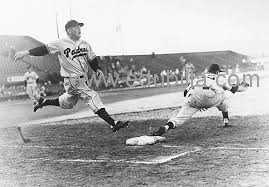
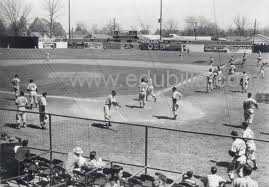

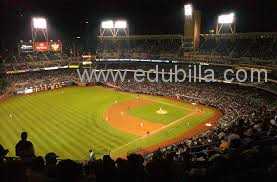
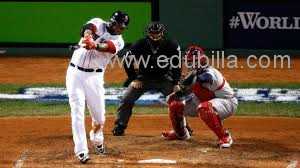
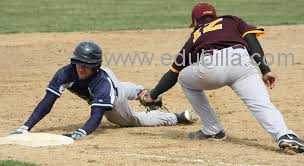
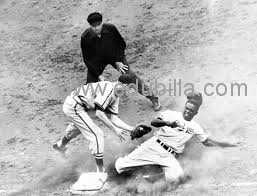

.jpg )
